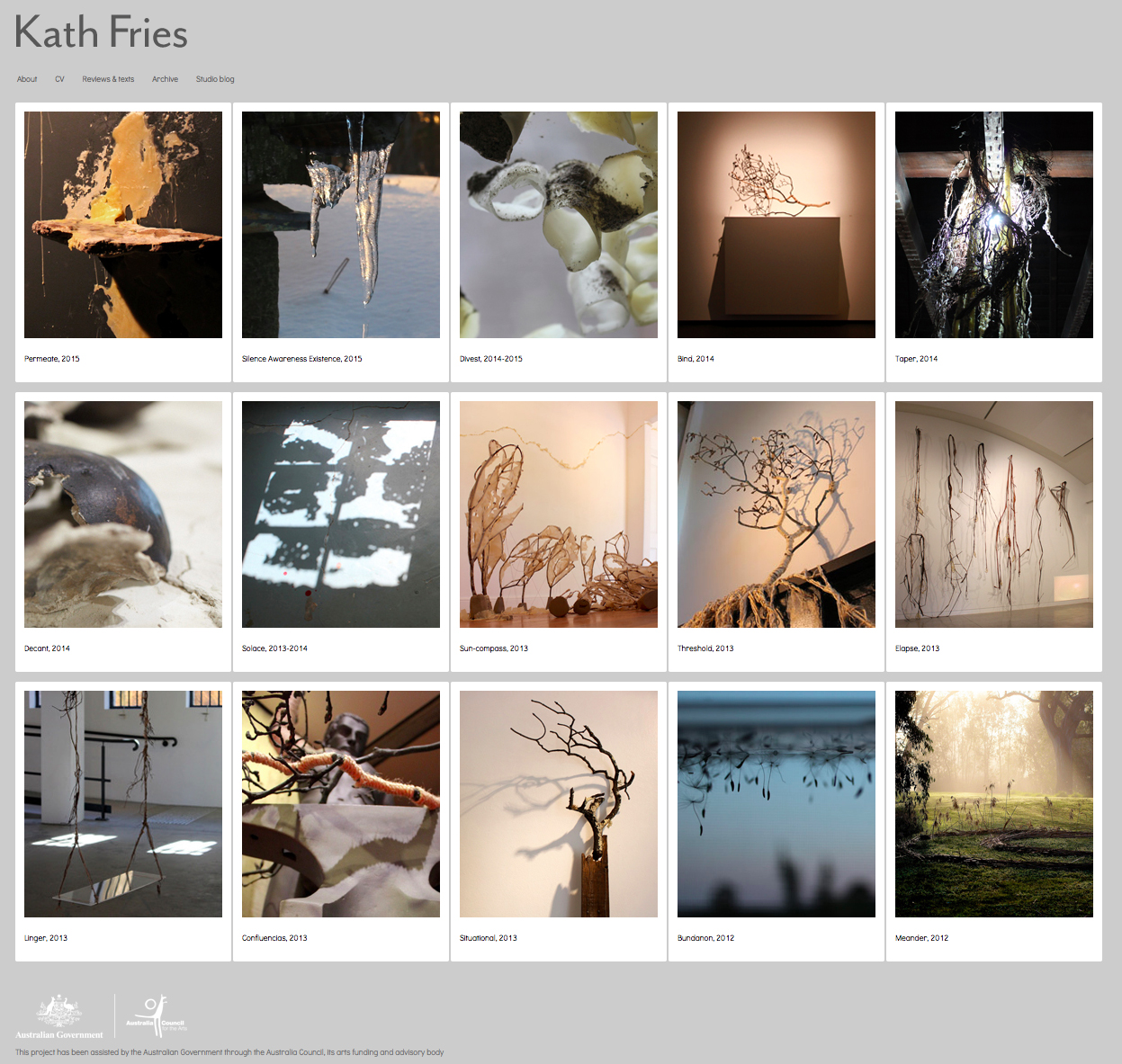 |
| Kath Fries, Quagmire, 2011, work in progress August |
I've been sharing the studio space at Primrose Park Cremorne over the last few months and observing the changing climate and weather conditions.
 |
| Kath Fries, Quagmire, 2011, work in progress August |
My first series of site-responsive installations and interventions focused on the weeds growing the cracks of the aging concrete edifices of the site. Using 'water saving crystals' (a domestic gardening substance that you can buy in most hardware stores and nurseries) and tiny mosses, ferns and weeds collected around the site.
 |
| Kath Fries, Quagmire, 2011, work in progress September |
These materials are carefully constructed into micro futuristic landscapes - like tiny zen gardens, following the cracks and undulations of the concrete horizontal surfaces of the aqueduct arches of Primrose Park.
 |
| Kath Fries, Quagmire, 2011, work in progress September |
Weeds naturally grow in crumbling and fault-line cracks in the concrete, as water naturally permeates and seeps from higher ground towards the ocean. The water-saving-crystals respond and change as the amount of water in the concrete and atmosphere ebbs and changes.
 |
| Kath Fries, Quagmire, 2011, work in progress September |
I tentatively titled these initial works Quagmire. I like the dual meaning of the word: - a soft marshy area of land that gives way when walked on; and an awkward, complicated, or dangerous situation from which it is difficult to escape. Both meanings of the title Quagmire add layers of meaning to the installations.
 |
| Kath Fries, Quagmire, 2011, work in progress September |
The Primrose Park area was originally a marshy, mangrove estuary bay where a number of streams converged to enter the harbour. Despite human efforts to change this marshy area by "reclaiming" it from its natural state (becoming North Sydney's first sewage works in 1981, then in the 1920's when urbanisation outgrew those facilities the area was turned into sports-grounds) storm-water naturally continues to run along the same old routes down to sea level. Heavy rainfall causes the 1890s concrete spillways to gush with storm-water overflow. Even in dry weather small pockets of marshy bog remain.
 |
| Kath Fries, Quagmire, 2011, work in progress September |




























%2BWhite%2C%2BBRANCH%2B3d.jpg)

















.jpg)













